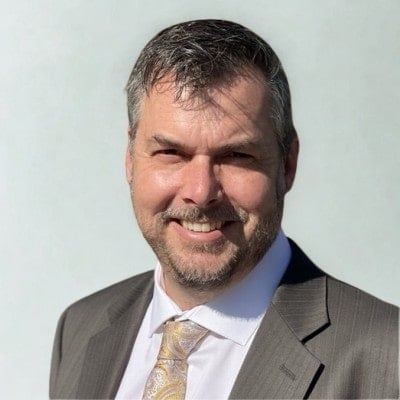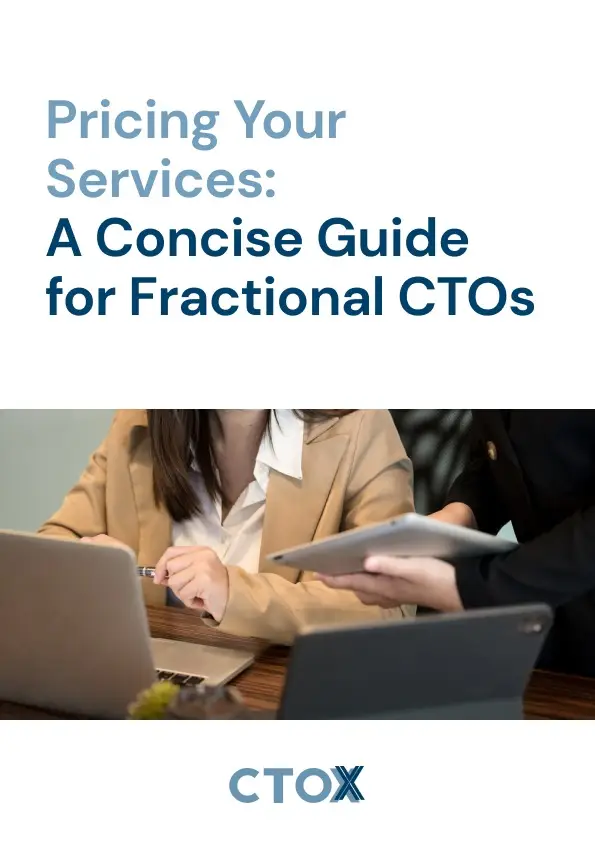Christopher's
AI Strategy
Christopher Grant – Letting AI Work Where the Work Lives — A Fractional CTO’s Workflow Revolution

5/5
“I don’t embed AI in my tools. I let AI access them wherever they live.”
Key Insights
-
30yrs + experience
-
Clients: 3
-
Background: Fortune 50

Who is Christopher?
Before CTOx Accelerator™
-
Everything was siloed
His work was scattered across tools like Google Docs, Notion, and Drive without a clear system.
-
Manual project planning
Writing Jira tickets and translating ideas into structured work took hours of repetitive work.
-
Transcript chaos
Cleaning and organizing transcripts from research and meetings was a time-consuming manual task.
-
Prompt overload
Trying to fit everything into one Claude prompt regularly hit context limits and broke down.
-
Disconnected data
Needed to manually dig through Gmail, Slack, or notes to find what was relevant.
-
Under-leveraged AI
Used AI for isolated tasks but didn’t fully integrate it into his creative and technical workflows.
After CTOx Accelerator™
-
Integrated Claude as an AI conductor
Now uses Claude to direct, summarize, and connect content across all platforms.
-
AI-powered Jira automation
Claude generates full user stories from notes, specs, and transcripts—40+ tickets in minutes.
-
Transcript pipeline built
Claude automatically cleans and files transcripts into client-specific folders.
-
Structured writing workflow
Uses AI to write docs with a TOC-first approach, then builds each section sequentially.
-
Real-time document editing
Claude edits files in Obsidian and Hugo as he works—instant feedback, real-time updates.
-
Cross-platform summarization
Claude pulls useful summaries from Gmail, Google Drive, and Slack DMs.
-
Obsidian + Hugo publishing pipeline
Writes in Obsidian (Markdown) and publishes via Hugo with AI-assisted automation.
-
Multiple accounts, one AI
Claude works across personal and client accounts, even in tools like Canva.
-
System prompts and shortcuts
Uses prompt engineering to guide Claude to specific tools, folders, or databases.
-
MCP + Desktop Extensions
Runs Claude on a local MCP server with secure access, adding extensions for major tools.
The Challenge
Christopher Grant needed a streamlined, flexible, and secure system to manage his notes, content, and publishing workflows. Traditional tools like Notion felt limiting due to their complexity and reliance on cloud infrastructure, which raised concerns about privacy and data control. He wanted a solution that allowed him to work with simple, flat Markdown files that he could easily sync, organize, and publish without friction.
Additionally, maintaining security while handling both personal and professional data was critical, especially as he navigated the risks associated with emerging technologies like MCP servers. The goal was to create a workflow that balanced ease of use, flexibility, and security, supporting both individual productivity and future scalability with AI integration.
The CTOx®
Approach
- Novel Note Taking System Deployment: Implemented Obsidian as the core note-taking tool, leveraging its support for flat Markdown files and flexible linking.
- Publishing Platform Integration: Created a Hugo server integration to sync content directly from Obsidian to his publishing platform, preserving consistent file structure.
- Local File Management Emphasis: Emphasized local file management over cloud reliance to maintain greater control and security of sensitive information.
- Extended Functionality with Plugins: Incorporated tagging and third-party plugins to extend functionality, including database-like views and diagramming with Excalidraw.
- Balanced Data Handling: Balanced personal and professional data handling by selectively using tools based on security needs.
- Future-Proofing with AI: Stayed informed on AI and agent-based workflows to anticipate and incorporate future automation and secure data access.
- Community Knowledge Sharing: Shared knowledge and workflows with the community to support tactical upgrades and best practices in note-taking and data security.
CTOx® Methodologies Used:






Real Results
-
Hours Saved Weekly
Project management, task creation, and content cleanup are now automated and AI-managed.
-
Eliminated Friction
No more switching between tools to gather info; Claude pulls and connects it all.
-
Faster, Cleaner Documentation
AI helps structure and rewrite documents with high clarity and less effort.
-
70% Project Coverage
Claude identifies gaps and suggests additions, giving him a nearly complete draft before review.
-
Private, Extensible Workflow
Local-first approach ensures privacy and long-term control.
What Can You Learn From Christopher?
-
Orchestrate, Don’t Embed
AI works best when it operates across tools, not inside a single one.
-
Modular Prompts Are Powerful
Start with a Table of Contents and build section by section to avoid context limits.
-
Use Your Own Tools
Local-first tools like Obsidian + Hugo give you control and integrate easily with AI.
-
Secure Your Setup
A local Claude + MCP server gives you private, high-performance AI workflows.
-
Be Specific With System Prompts
Shortcut phrases like “Navarri folder” or “check Slack for DM from X” help Claude focus.
-
Let AI Do The Digging
Christopher doesn’t look for what’s relevant anymore—Claude brings it to him.
FAQs About the CTOx® Journey
Common questions technology leaders ask when exploring the fractional CTO path, answered based on patterns we’ve observed across hundreds of successful members.
What kind of background do successful CTOx Accelerator™ members typically have?
Most successful CTOx Accelerator members are experienced technology leaders with 10+ years in the industry, including current or former CTOs, VPs of Engineering, Technical Directors, and Senior Engineering Managers. They typically have experience leading teams, making strategic technology decisions, and working directly with executive leadership. Many come from startups, scale-ups, or enterprise environments where they’ve been responsible for technology strategy, not just implementation.
How long does it usually take CTOx Accelerator™ members to get their first client?
The most proactive CTOx Accelerator™ members typically land their first client within 30-90 days of joining the program. Some exceptional cases have signed clients within their first week, while others may take longer depending on their network activation efforts and niche focus. The timeline largely depends on how consistently members implement the Network Activation process and execute on the business development activities outlined in the program.
What are the most common challenges people face when transitioning to fractional CTO work?
The three most common challenges are: (1) Overcoming discomfort with business development and “marketing” activities, (2) Shifting from hourly thinking to value-based pricing and retainer models, and (3) Learning to delegate tactical work while focusing exclusively on strategic leadership. Many also struggle initially with positioning themselves in a specific niche rather than trying to serve everyone.
What types of client engagements and revenue models do CTOx Accelerator™ members typically build?
CTOx Accelerator™ members typically build diversified portfolios with two main engagement types: “Engaged” clients (full strategic leadership at $10k-$15k/month) and “Advisor” clients (high-level guidance at $3k-$5k/month). Many also offer strategic intensives or half-day consults as entry points. Successful members often manage 5-8 total clients with a mix of engagement levels, targeting $500,000+ annual revenue through this diversified approach.
What advice do most CTOx Accelerator™ members give to technology leaders considering this transition?
The most consistent advice from CTOx Accelerator™ members is: (1) Start while still employed to reduce financial pressure, (2) Focus on a specific niche rather than trying to serve everyone, (3) Leverage your existing network through the Network Activation process before trying cold outreach, and (4) Embrace relationship-based business development rather than traditional marketing. They also emphasize the importance of following the proven system rather than trying to figure everything out independently.
